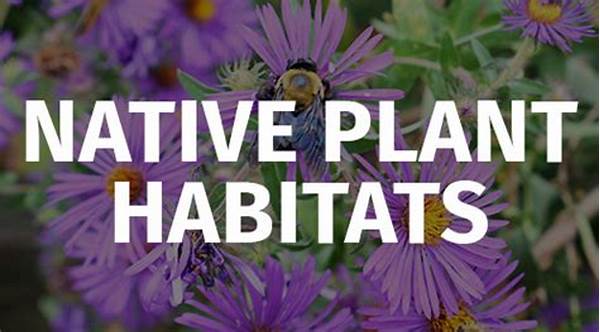Hey there, nature enthusiasts! Dive into the lush and fascinating world of sustainable native species habitats with me, where we embark on a journey of understanding how these unique ecosystems thrive. We’re talking about creating environments that support indigenous plants and animals, ensuring they exist in harmony with our surroundings. So grab a cup of coffee (or tea, if you prefer) and let’s get into it!
Read Now : Tranquil Village Stays For Children
Why Sustainable Native Species Habitats Matter
Imagine waking up to the chorus of birds native to your region or strolling through a vibrant garden filled with indigenous plants. That’s what sustainable native species habitats are all about. These ecosystems are crafted to support local flora and fauna, which in turn benefits both the environment and us humans. By allowing native species to flourish, these habitats help maintain the natural balance, reduce resource consumption, and even enhance the beauty of our surroundings. Plus, because native plants are adapted to local conditions, they require less water and care—talk about a win-win situation!
Not only do sustainable native species habitats preserve biodiversity, they also play a role in education and awareness. When people witness the beauty and resilience of native ecosystems, they’re more likely to develop a passion for preserving them. This can lead to community engagement and conservation efforts that ensure these habitats continue to thrive for generations. So, next time you think about planting a garden or landscaping your yard, consider incorporating native plants and support the creation of sustainable native species habitats. They’re not just good for the environment—they’re good for the soul too.
Building Sustainable Native Species Habitats
1. Start Small, Think Big: Initiating sustainable native species habitats can seem daunting, but you can start small by planting a few native plants in your garden. This will gradually transform your space into a welcoming environment for local wildlife.
2. Know Your Region: Understanding the local climate, soil type, and native species is crucial for establishing sustainable native species habitats. Research and reach out to local environmental groups for advice on the best native plants for your area.
3. Encourage Biodiversity: Sustainable native species habitats thrive on diversity. Mix different plants, shrubs, and trees for a layered effect that offers food and shelter for various animals, insects, and birds.
4. Minimize Chemical Use: Limiting pesticides and fertilizers helps maintain the ecological balance within sustainable native species habitats. Native plants naturally resist pests and require less intervention, promoting a healthier ecosystem.
5. Community Collaboration: Teaming up with your neighbors or local organizations can boost your efforts. By working together, you can create larger, interconnected sustainable native species habitats that support a wider range of species.
Embracing Community Initiatives
Communities play a critical role in the creation of sustainable native species habitats. By engaging with local organizations, participating in workshops, or even starting a neighborhood gardening group, we can collaboratively make a significant impact. These initiatives not only help create interconnected habitats but also foster a sense of community pride and responsibility.
Read Now : Family Vacation Spots With Waterpark Attractions
Imagine hosting a weekend event where everyone plants native trees and flowers in public spaces! Not only does this create more sustainable native species habitats, but it’s also a great opportunity to learn from experts about the specific needs of local plants and animals. Together, we can make sustainability a communal effort and celebrate each small victory along the way.
Tips for Maintaining Habitats
The Future of Our Ecosystems
Protecting and nurturing sustainable native species habitats contributes significantly to the broader goal of conserving our natural environment. As urbanization continues to grow, maintaining these pockets of biodiversity becomes increasingly important. By fostering these habitats, we’re ensuring that future generations can enjoy local wildlife and gain access to natural areas even within city limits.
These sustainable native species habitats act as crucial refuges for biodiversity, providing spaces where life can continue to flourish amidst an ever-changing world. They are small-scale models of how we can live in harmony with nature, showcasing the resilience and beauty of local species. By promoting these habitats, you’re not only contributing to local ecology but also joining a larger movement towards sustainability and conservation.
Conclusion: Our Small Steps Matter
In conclusion, remember that creating sustainable native species habitats might start as an individual or small community effort, but it holds the power to influence larger environmental changes. Every plant you cultivate, every habitat you restore contributes to a healthier ecosystem and a brighter future for all species involved. It’s a journey of growth—both for the environment and for us.
As you step out into your yard or community garden next time, take a moment to appreciate the little ecosystem you are cultivating. It’s a sustainable step towards ensuring our natural heritage survives and thrives, becoming a legacy for the next generation. Each effort to support sustainable native species habitats enriches our world with the rich tapestry of life that it deserves. Let’s keep it going!



